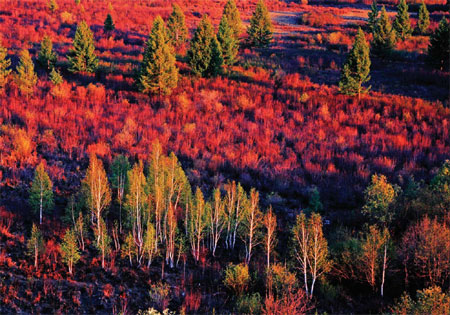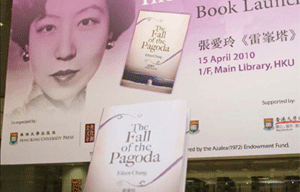Hunt for red October
Updated: 2011-10-07 10:17
By Yin Yin (China Daily)
|
|||||||||
|
|
Autumn is the golden time to travel across China's beautifully colored landscapes
Cool, colorful, mellow and resplendent best describe a Chinese autumn. One falling leaf is a sign that autumn is on its way, says a Chinese proverb, but before the trees become bare there are some wonderful bursts of color to be seen throughout the many mountain and forest parks. Gingko trees are autumn favorites and so are maple and poplar spread across the northern part of the country. Here are five famous leaves watching destinations worth checking out:
1. Beijing, Xiangshan Park
Beijingers always tell visitors to visit Xiangshan Park during October and appreciate the scenery. Every October the two-week Red Leaves Festival attracts hundreds of thousands of people.
Xiangshan refers to the top part of an incense burner and was built at the foot of the western mountains in the Haidian District during the Jin Dynasty (1115-1234) when bronze incense burners were a common article found in temples.
Smoke trees turn a brilliant red during autumn and change color during each day. The first few shimmers of early morning frost dust their leaves, but as the frost fades the leaves become more and more scarlet.
Tourists can climb the mountain on the east side, but should take care because these steps are very steep. The zigzag west-side trail is easier. When tourists climb to the top of the mountain, clouds often float around them and one gets the feeling of walking high in the sky.
2. Nanjing, Qixia Mountain
The mountain is famous for its maple trees. When autumn arrives thousands of local residents and visitors come to the area to camp and to enjoy the crimson maple leaves, which cover the entire mountain.
It is located in the northeast part of Nanjing, the capital of Jiangsu province. During the Southern Dynasty (AD 420-589), a Buddhist temple, called Qixia, was built here, hence the mountain's name.
This scenic spot spans over 860 hectares and has a peak of 286 meters. Emperor Qianlong in Qing Dynasty (1644-1911) called it "the first bright and elegant mountain of Nanjing." Qixia Mountain also has many fossils and is a natural geology museum. Other trees on the mountain are sweet gums, red maple, Japanese maple and Acer palmatum.
3. Xinjiang Uygur autonomous region, Kanas Lake
Kanas Lake area is like a fairyland and in Mongolian means beautiful and mysterious. The area has a dense coverage of birch trees. In autumn, the golden leaves provide a vivid backdrop and resemble a painter's palette. Many liken the landscape to Switzerland.
Located in a valley in the Altai Mountains, the finger-shaped lake covers an area of 45 square kilometers, with an average depth of 120 meters, making it one of the deepest fresh water lakes in China. Locals say there is a mysterious water beast, like the Loch Ness Monster, still living in the lake.
The forest surrounding the lake is covered with dense alpine vegetation, which is made up of spruce, birch and Siberian larch. This is the only area where animals and plants from Siberia can be found in China.
Most of the year, the lake is dazzling turquoise, however water color changes according to seasons and weather. In May water is gray because of the melting snow from the surrounding peaks. In July it is aquamarine, in August the water changes to dark green and from autumn to May it returns to its glaring turquoise color.
4. Jilin province, Red Leaves Valley
Red Leaves Valley sits in the Jiaohe city, at the west foot of Changbai Mountain. When autumn comes, all is red. The best time to enjoy the red leaves is during early October.
The valley is filled with majestic mountains, flowing streams and sporadic villages. In the lush woods along the valley grow plentiful trees, such as maple, birch, larch and gingko trees.
During autumn the leaves gradually turn from a cardinal red into a gorgeous gold. When the wind blows across the valley, this mix of red and gold vegetation can look like massive waves rolling across a great sea.
The gingko trees are especially beautiful. During autumn their leaves turn bright gold and as they fall on the forest floor, create yellow paths for visitors to follow. A visitor can really "follow the yellow brick road".
Local people always call the valley the "colorized mountain".
5. Inner Mongolia autonomous region, Moerdaoga National Park
Genghis Khan was once on a hunting expedition and was inspired by the spectacular sight of the dawn.
When the sun rose above the mountain he reportedly shouted out to his tribe: "Moerdaoga", which means set out for battle on your horses.
Moerdaoga National Forest Park is the largest forest park in China and one of the best places to see larch trees. Maple, oak and white birch also radiate the mellow colors of autumn.
There is also a large tract of Greater Hinggan Mountain larches that are still thickly covered in needles in October.
But later on the needles will start falling turning to gold before disappearing completely.











